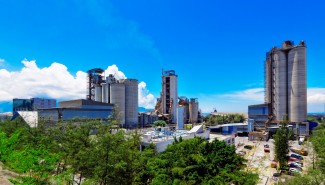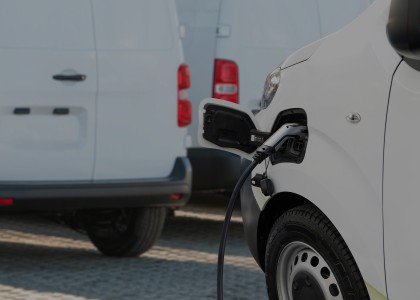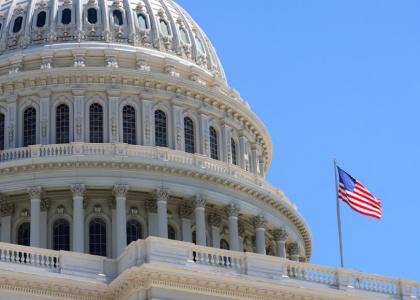Technologies that cut industrial carbon emissions often also reduce local air pollution. A new analysis shows how prioritizing high-emitting plants near large vulnerable populations and coordinating with community stakeholders could maximize the benefits of industrial decarbonization funding.
Today’s federal industrial decarbonization funding offers a unique opportunity to install new technologies that deeply reduce both carbon emissions and health-damaging air pollution. But while cutting carbon emissions from industrial facilities anywhere helps tackle global climate change, reducing local air pollution is more urgent in some locations than others, depending on nearby populations.
To help the Biden administration, industry, and state and local community planners better align air quality and climate efforts when making investment and facility upgrade decisions, a new ACEEE analysis and interactive map identify locations where industrial facilities emit high levels of carbon dioxide and air pollution near large disadvantaged populations, using cement facilities as an example of this approach.
The health impacts of industrial air pollution are significant. Children living near industrial sites are much more likely to be diagnosed with asthma, likely due to high levels of PM2.5—the type of air pollution we focus on in this study. Heightened PM2.5 is also linked to increases in heart disease and even death. Despite the well-known impacts of industrial air pollution, industrial pollution sources are not distributed equitably. Hazardous waste sites are more likely to be near low-income communities than wealthier ones, for example, and Black and Hispanic communities are disproportionately exposed to pollution from the chemical industry. In addition, regulatory actions to restrict industrial pollution are often enforced inequitably.
Several locations have high levels of industrial emissions near vulnerable communities, and one stands out
For this analysis, we identified disadvantaged communities using the White House’s definition of Justice40 populations, which considers socioeconomic status, community health (e.g., rate of asthma or life expectancy), and housing, transportation, energy, or environmental exposure burdens (e.g., legacy pollution or flood risk) to identify communities vulnerable to additional stressors. Our analysis examines the cement sector and the steelmaking sectors, both major focuses of federal decarbonization investments. Technologies with the potential to drive transformative decarbonization are available in both sectors but remain underutilized. In this post, we use cement plants as an example to explain our analysis and findings. Our iron and steel analysis can be found in the interactive map. Similar analyses could be performed for other industrial sectors.
As the map below shows, we found that cement facilities in the United States vary widely in the scale of their CO2 and PM2.5 emissions and the number of people living within disadvantaged census tracts in a three-mile radius of the facility.[1]
Let's consider two cement plants in very different locations to explore how stakeholders can use this new mapping tool.
Ste. Genevieve, Missouri, is home to the cement facility with the highest annual release of CO2 in the country, an amount equivalent to over 690,000 gasoline-powered cars being driven for a year. The plant is also in the top 10% of cement facilities for PM2.5; in 2019, it emitted more than 250 metric tons of PM2.5. It is in a sparsely populated area, however, so it directly impacts relatively few people overall. It also does not overlap with census tracts identified as disadvantaged, and thus more vulnerable to the impacts of air pollution, within a three-mile radius.
In contrast, the largest cement plant in Florida releases somewhat less CO2 and PM2.5 (in the top 10% for CO2 and top 30% for PM2.5 among U.S. cement plants) but is located within densely populated Miami-Dade County, where more than 100,000 people live in Justice 40-defined census tracts within a three-mile radius of the plant. Even though this facility does not emit as much as the facility in Ste. Genevieve, it stands out as critical for investment in decarbonizing because of the health implications for nearby communities, as well as the large opportunities to improve industrial sustainability and cut carbon emissions. Other locations our analysis identifies as good places to prioritize planning for decarbonization and pollution reduction investments, from the standpoint of environmental justice, include Orangeburg County, South Carolina; San Bernardino, California; and Ellis, Texas. Geographic analyses such as this provide a way to quickly identify locations where targeted federal support could lead to big wins for multiple stakeholders. Explore our interactive mapping tool for additional examples in the cement and steel industries.
Industrial companies and communities should coordinate—and apply for federal funding—to address air quality concerns while decarbonizing
Today, many U.S. industrial companies are beginning to retrofit facilities with new decarbonization technologies. Understanding the air quality impacts of decarbonizing can help maximize the benefits of planned projects and identify technology pathways that meet the needs of both communities and businesses. If companies engage with communities well in advance of planned facility retrofits, they will have a greater opportunity to achieve simultaneous wins for both industrial decarbonization progress and community benefits. National labs, universities, local or state planning offices, nonprofits, utilities, and local businesses and community-based organizations can help facilitate productive relationships between communities and heavy industry by providing technical services and expertise in support of industrial decarbonization progress and local air quality needs.
Coalitions seeking to align industrial investments with local needs can separately leverage support from the Department of Energy (DOE) and the Environmental Protection Agency (EPA). While most federal funding opportunities to decarbonize manufacturing processes are available through DOE, programs to support the surrounding communities are coordinated primarily through EPA. To ensure that federal funding for industry benefits communities, DOE now requires that industrial companies applying for funding submit community benefits plans. These plans require that industry ensure two-way engagement with communities, and they encourage formal negotiation processes such as community benefit agreements, community labor agreements, or community workforce agreements.
Community-led coalitions can apply for funds from EPA for climate and pollution reduction projects or for support through the 16 Environmental Justice Thriving Communities Technical Assistance Centers recently established across the country. These new programs can support capacity building for communities to address environmental justice concerns. Climate Pollution Reduction grants from EPA support state and local stakeholders in developing ambitious plans that reduce both carbon emissions and air pollution; industrial sources could be a key component of these plans in many communities. Communities can also apply to DOE for technical assistance through programs such as the Communities Local Energy Action Program.
Prioritizing people in decarbonization decisions
The focus of industrial decarbonization is often on tackling carbon emissions that cause climate change, while the benefits that are more pressing to surrounding communities—improvements in air quality and health—are not maximized as they could be. Our analysis identifies locations where high-polluting industrial facilities are near disadvantaged communities to help show sites where decarbonization could be focused most urgently. Prioritizing these locations for investment and addressing the air quality concerns of the affected communities is essential for realizing the full potential of decarbonization and building a healthier, more equitable future.
[1] We chose to use a three-mile radius in our analysis to align with other studies of the localized impacts of air pollution on communities.




